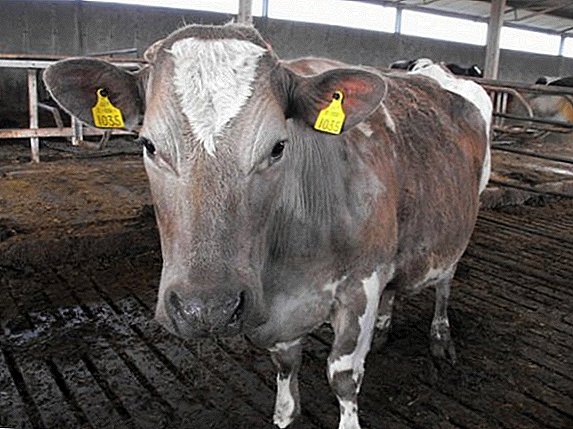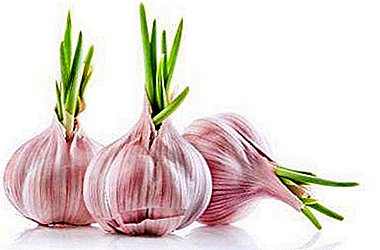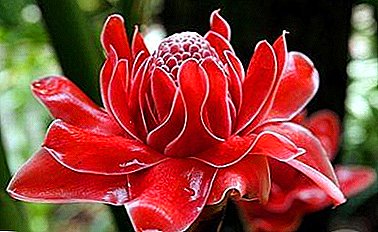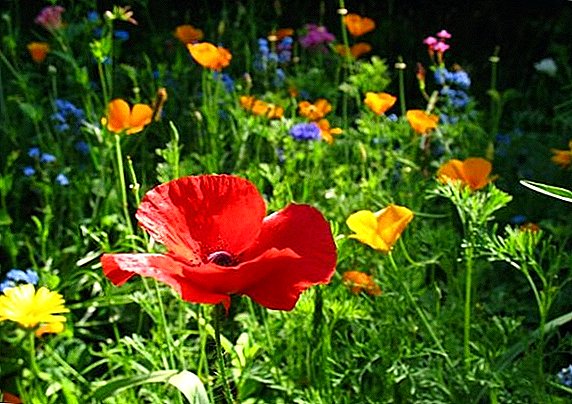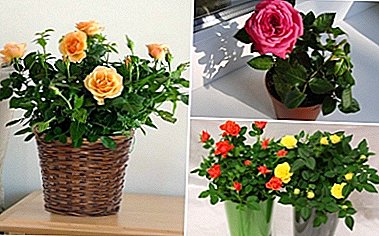
The potted rose is a very delicate plant. This is a great alternative to a bouquet of flowers. But getting it as a gift or buying in the store on their own, many are faced with the imminent death of a flower.
Not everyone has the power to create comfortable conditions for the growth and development of the bush. The rose requires increased attention and constant care.
Life cycle features
After abundant summer bloom, in mid-autumn, the rose will begin to prepare for the state of hibernation:
- She will no longer form new buds.
- Begin to turn yellow and fall off the leaves.
At this time, the plant begins to prepare for the winter.
How does a houseplant winter?
In winter, the rose prefers to be at rest. The plant slows down the vital processes. In this way, it prepares for a new life cycle.
The flower, which is stimulated to year-round flowering, quickly depleted and dies.
How to care after purchase?

Home-bought rose in bloom. Such a plant is treated with growth stimulants and it is necessary to care for it a little differently than for a plant grown at home:
- First of all, the flower is removed from the package to provide access to fresh air.
- A rose is examined, cutting off from it all dried leaves and buds.
- Then rinsed under a warm shower, washing away possible pests.
- Not bad to make preventive treatment of the bush against the fungus.
- The pot is put in place of the intended content and left to adapt at home.
- After 2-3 weeks the bush can be transplanted. This can be done in the winter, as the plant will not be in a state of winter dormancy.
- The roses are provided with comfortable conditions of keeping: they spray it with warm water, water it, and if necessary additional lighting is organized.
Secrets of keeping plants at home
In winter, the rose bush needs special conditions. How to care for a flower to grow a healthy rose?
Preparing for the winter
House roses begin to prepare for the winter, when the plants no longer appear buds. It happens at the end of November.
- Rose stop feeding.
- Stop plentifully watered.
- Remove underdeveloped buds.
- After the leaves fall off, pruning is done.
Do I need to move to another place?
An ideal place for wintering a homemade rose would be a cool room.. Good fit glazed loggia or balcony.

In the absence of the opportunity to make a pot with a rose in the cool, you can leave it in the room in the same place. At the same time, it is necessary to decide whether the plant will be given winter rest or not.
To create conditions conducive to the rest of the flower you need:
- Put the pot away from the heating devices.
- Spray the plant several times a day, thereby increasing the humidity of the air.
- On cloudy days, additional lighting can be provided with a fluorescent lamp.
If you plan to grow a rose bush without winter dormancy, then it creates the same conditions as in the summer period:
- Plant light phytolamps for 20 hours a day.
- Create high humidity conditions with humidifiers.
- Create conditions for the flow of fresh, but not cold air.
- Watering and fertilizing produce in the same quantities as in the summer.
- Completely plant is not pruned. Only wilted buds are removed.
Temperature, humidity and lighting
In the room where the rose winters, It is recommended to maintain the temperature from +4 to +10 degrees. A few days a plant can withstand a drop in temperature to zero and even a cooling down to -2 degrees.
In case of the likelihood of small frosts, the following protection measures should be taken:
- Wrap a plant pot with a warm blanket or place it in a box with sawdust.
- Mulch the ground with needles or needles.
Do not cover the plant with a can or film. Accumulated condensation and lack of fresh air can lead to rotting of the rose.
Humidity should be at least 50%. In a cool room during the winter dormancy spraying the flower is not needed.
On cloudy days, roses need additional lighting.. It can be achieved using fluorescent lights.
Watering
Watering during the rest period should not be abundant. The main thing is to prevent complete drying of the coma of the earth. Water should be warm and preferably soft.
Depending on the humidity of the air, the frequency of watering can vary from 1 to 3 times a week.
Top dressing
Feeding in winter rest completely stop.
Pruning
Pruning plants produce after the last leaves fall off. This usually happens at the end of November. The twigs are cut with a disinfected knife, leaving 3-4 buds. The highest of the left buds should be directed to the side, and not to the stem of the rose.
Transfer
Transplanted rose in the first half of spring. An exception is made for roses purchased in the winter in the store. Such a plant, being in a growing season, will not suffer from a winter transplant.
Mistakes and struggle with consequences

In the care of the rose in winter, you can make mistakes, which then will be difficult to fight:
- The plant can freeze if it is at very low temperatures. In this case, the frozen shoots should be removed from it, and then transplanted into nutrient soil.
- The rose can dry out if you subject it to a sharp temperature drop. To combat the consequences, it is necessary to restore the microclimate and cut off the dried twigs.
- Due to excessive watering, the rosebush may rot. To reanimate a plant can only transplant with the preliminary removal of rotted roots.
- Due to insufficient moisture, the plant may dry out. In this case, its dead shoots are cut so that 2-3 cm remain until the trunk. After that, the soil is abundantly moisturized and the plant is covered with a film, creating conditions of high humidity. At the same time periodically the rose must be aired.
At rest, the rose is until mid-February. With the arrival of spring, it will begin to delight the owner with intensive growth and abundant flowering.



